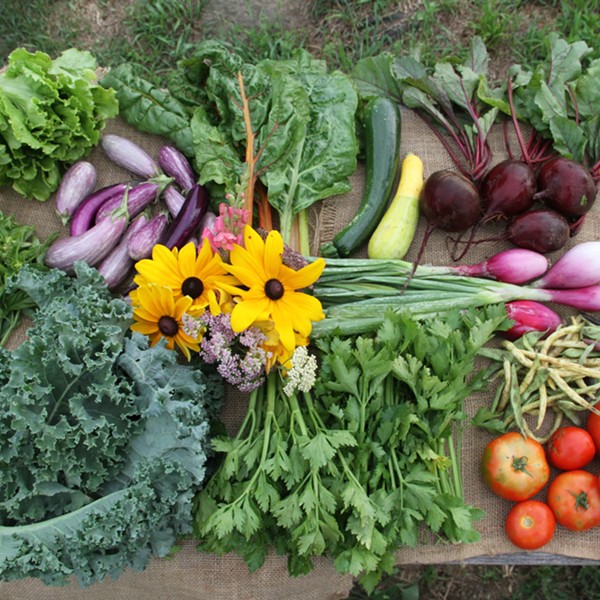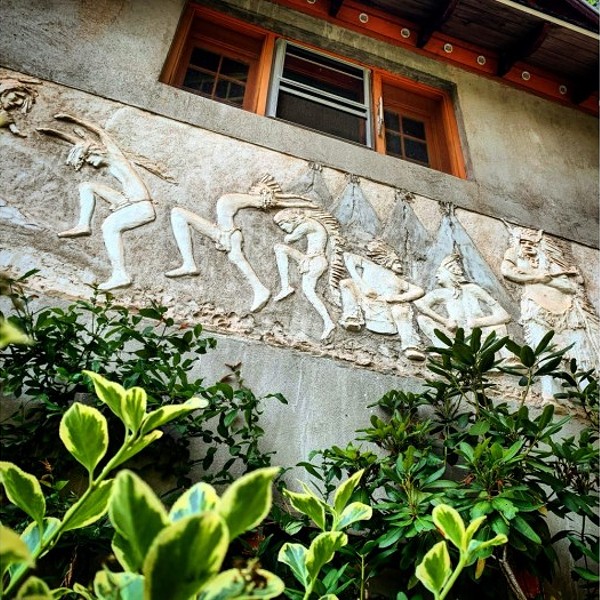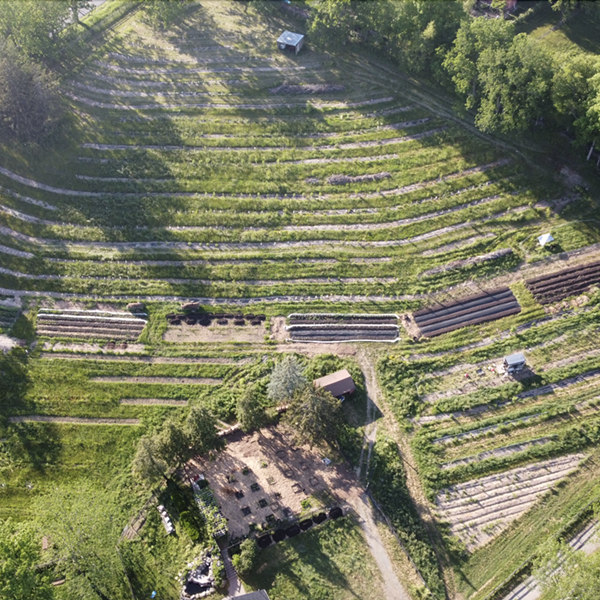But it doesn’t have to be. Whatever the scale—from small backyard plot to large commercial farm—it is possible to grow food all year long in this climate using a few simple, inexpensive techniques. And the resulting vegetables actually taste better for having been grown in the cold.
Stone Barns in Pocantico Hills was built in the 1930s for the Rockefeller family as a dairy farm on about 80 acres of land. Now, besides being an organic farm that provides much of the food for Blue Hill’s on-site restaurant, Stone Barns is a nonprofit educational institution with extensive programs and classes for all ages in a variety of areas, including winter gardening. An elegant complex of stone buildings grouped around a central courtyard, it offers views on three sides of the sloped, undulating, partly wooded site that includes a seven-acre garden, pasture and housing for poultry, sheep, and pigs, several hoop houses, and a large, heated greenhouse. Some of the fields are fallow, but nearby plastic tunnels shelter long rows of plump spinach, shielded further by corn stalks left standing in adjacent rows on their north side as a windbreak. Nutrient-adding cover crops blanket much of the rest. It’s not postcard pretty, but there’s a whole lot of food still in the field, and in conditions that let it reach the pinnacle of flavor and remain accessible for harvest. Jack Algiere is the four-season farm manager at Stone Barns. This time of year, his main focus is on the half-acre greenhouse that is farmed intensively all year long, growing 50 or so crops at a time. Minimally heated to 30 degrees (the thermostats are down at plant height) by high-efficiency propane burners (which also generate growth-spurring carbon dioxide), the vast enclosure smells like spring even as a cold wind scours the outside.
Most of the farm’s produce goes to the restaurant, and the rest is sold at farmers’ markets in the area and at their own monthly winter market on the second Sunday of every month. Because the greenhouse is expensive to run—$11,000 per year in propane, and a total cost of three cents per square foot per day—Algiere works constantly to maximize the value of his crops. “Bigger is not necessarily better; the most money sometimes comes from the smallest things,” he explains; baby carrots and turnips and microgreens fetch far more than their mature siblings. Plantings are very close together, making use of every available square inch. Other plants—beets, parsnips, spinach—are better when they freeze, so they stay outside. Working closely with the restaurant up the hill, he says, “gives us the ability to grow different and exciting things. I search the world for cutting-edge ingredients, and they are always looking for new things to try.” Recently, he has been growing ginger with great success (try buying some, burying it in a pot of soil, and keeping it in a warm place.)
Dan Barber is the James Beard Award-winning executive chef and co-owner of Blue Hill at Stone Barns, where he has earned a reputation as one of the most gifted and passionate proponents of farm-to-table cooking in the country. For Barber, eating locally grown food in the winter is a question of quality. “We’re not going to choose a bad-flavored vegetable just because it’s local,” he says, but winter has culinary benefits: Cold weather makes hardy plants taste better. “Starches convert to sugar to prevent ice crystals forming. We taste sweetness, but it’s the plant trying not to die.” He sees the constraints of winter as a boon to creativity: “Working with a distributor, the world is your pantry. With the farm, we’re limited in many ways, but there’s real pleasure in the limits. I enjoy the lack of options; we end up being really creative in the kitchen.” Recently, faced with a ton (literally) of banana squash that needed using, Barber pressed them under bricks as they cooked, trimming the result to look like steaks, and served them with steak sauce, creamed spinach, and cranberry ketchup. “There’s a glory to restrictions; we concentrate on the limited palette available. And I like food that has a story, a connection to a place.”
















